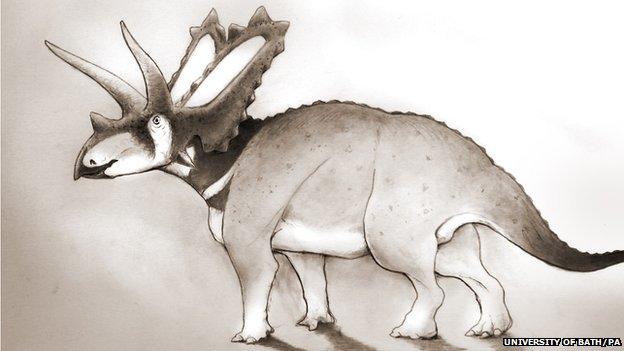New horned dinosaur species identified from museum's fossils
- Published

The new species was a smaller cousin of the well-known plant eater Triceratops
A new species of horned dinosaur has been identified from fossils held in a Canadian museum for 75 years.
The fossils had previously been classified as belonging to a different dinosaur group.
But Nick Longrich, from the University of Bath, found they closely resembled a dinosaur from the south-west US.
He says the remains represent a new species of the dinosaur Pentaceratops - a smaller cousin of the familiar horned plant-eater Triceratops.
Details of the research have been published in the journal Cretaceous Research.
'Undiscovered dinosaurs'
The paper contains a formal description of the animal including its new name - Pentaceratops aquilonius.
It was a buffalo-sized plant eater that lived from about 75 million years ago.
Dr Longrich also studied another horned dinosaur held within the museum's collection.
He believes it is a new species of Kosmoceratops, a dinosaur with an ornate skull previously found at sites in Utah.
"We thought we had discovered most of the species, but it seems there are many undiscovered dinosaurs left," Dr Longrich explained.
"The total dinosaur diversity must have been extraordinarily high. We've really only just scratched the surface."
The dinosaurs lived in western North America at the end of the Cretaceous Period.
Dr Longrich believes that although distinct northern and southern provinces existed, there was exchange between them.
Dinosaurs would spread from one part of the continent to the other, then diverge to form new species.
Competition between the different species then prevented the dinosaurs from moving between the northern and southern regions.